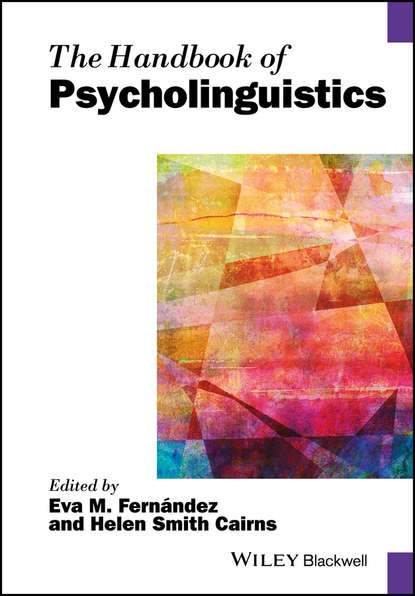"The Handbook of Psycholinguistics" - это книга, которая объединяет подходы из лингвистики и психологии, исследуя обработку языка и его усвоение с разных точек зрения. Книга содержит передовые исследования из области когнитивной науки, нейронаук и других связанных областей, и представляет читателям комплексный обзор текущего состояния области, с акцентом на тенденции исследований, наиболее вероятных в определении формы психолингвистики в ближайшие годы. Главы книги организованы в три части, соответствующие основным областям психолингвистики: производство, понимание и усвоение. Коллекция глав, написанных международной группой ученых, включает многоязычные населения и нейролингвистические аспекты. Каждая из трех секций также содержит обзорную главу, в которой читатели знакомятся с различными теоретическими подходами, направляющими исследования в соответствующей области. "The Handbook of Psycholinguistics" является своевременным, всесторонним и авторитетным источником информации, который будет полезен исследователям в области психологии, лингвистики и когнитивной науки, а также студентам старших курсов и аспирантам, интересующимся тем, как работает язык в человеческом разуме и как он усваивается.
Combining approaches from linguistics with psychological insights, The Handbook of Psycholingistics investigates language processing and teaches you about language acquisition from a variety of perspectives with cutting-edge research based on cognitive science and cutting-edge neuroscience and topics generally spoken. This book provides the reader with an extensive review of the present state of the study, with emphasis on topical trends that are now expected to determine the future direction of psycholinquistics. The text is divided into three sections, these correspond to the main areas in which psychologists specialise. They are all written by international authors teams with multilingual participants and neurological dimensions, expected. Within each of the sections, there is an overview describing the different theoretical views and methods used in research investigating various aspects of that section of study. A timely, comprehensive and authorative resource, The Handbook on Psycholingistics is the perfect addition to those researchers' library, interested in such topics.
Incorporating approaches of both linguistics and psychology, The Handbookof Psycholinguistics ranges over language understanding and language acquisition from diverse perspectives, exhibiting cutting-edge research deriving from cognitive or neurological science and other relevant fields. At its core the tome not only presents a thorough consideration of the current position within this body of enquiry but also specifies any observational currents that are likely to dictate the trajectory of development in psycholinguistics that will take course in years to come. All of this is done not merely for intriguement’s sake but as also the definitive assembly of chapters emerging from international scholars who both delve into multilingual environs and also need to do so in the neurophenomena dimensions. Each of these three units of action also features a concluding chapter on the various theoretical models that direct research effort conducted within the parameters of the respective section and the individual moment. Grounding in time, comprehensiveness, and excellency, then, The Handbook of Psycholiguistics makes for a favorable addition to the referendum shelves for researchers within disciplines such as Psychology or Linguistics, or cognitive science graduates and reminiscing students seeking a rich period in how languages workratic position in humans minds and ways in which languages come bequeathed.
Электронная Книга «The Handbook of Psycholinguistics» написана автором Группа авторов в году.
Минимальный возраст читателя: 0
Язык: Английский
ISBN: 9781118829547
Описание книги от Группа авторов
Incorporating approaches from linguistics and psychology, The Handbook of Psycholinguistics explores language processing and language acquisition from an array of perspectives and features cutting edge research from cognitive science, neuroscience, and other related fields. The Handbook provides readers with a comprehensive review of the current state of the field, with an emphasis on research trends most likely to determine the shape of psycholinguistics in the years ahead. The chapters are organized into three parts, corresponding to the major areas of psycholinguists: production, comprehension, and acquisition. The collection of chapters, written by a team of international scholars, incorporates multilingual populations and neurolinguistic dimensions. Each of the three sections also features an overview chapter in which readers are introduced to the different theoretical perspectives guiding research in the area covered in that section. Timely, comprehensive, and authoritative, The Handbook of Psycholinguistics is a valuable addition to the reference shelves of researchers in psychology, linguistics, and cognitive science, as well as advanced undergraduates and graduate students interested in how language works in the human mind and how language is acquired.



















